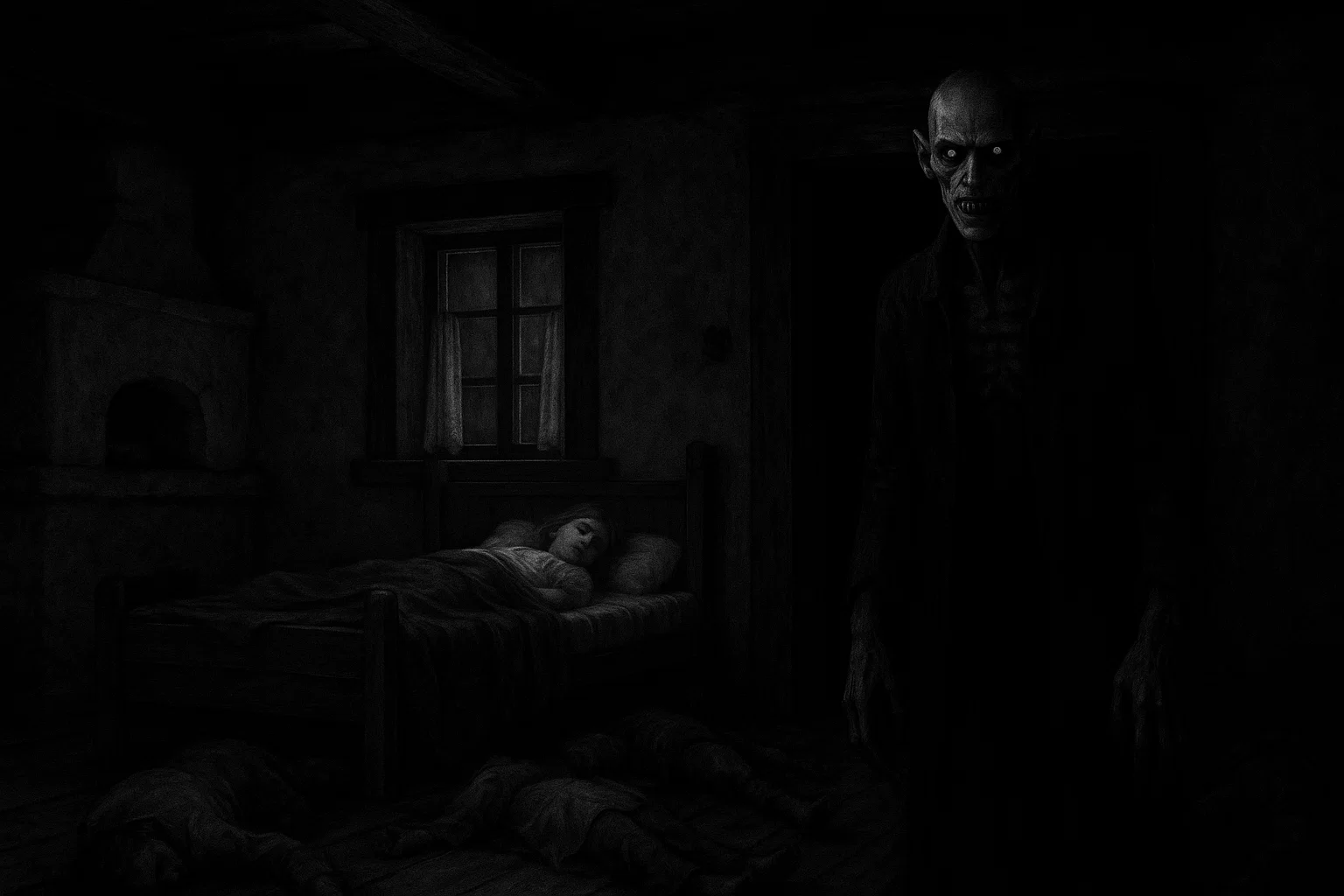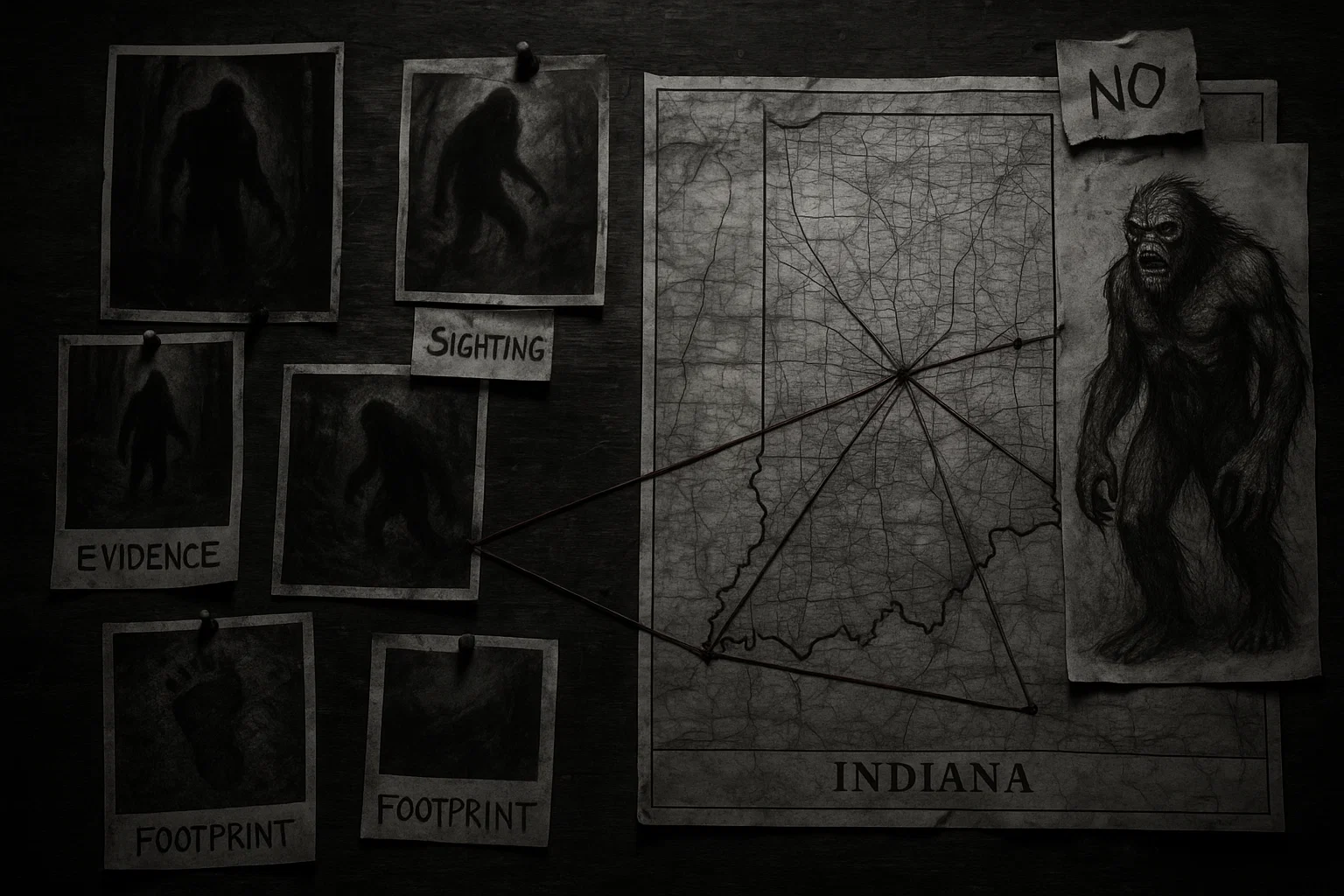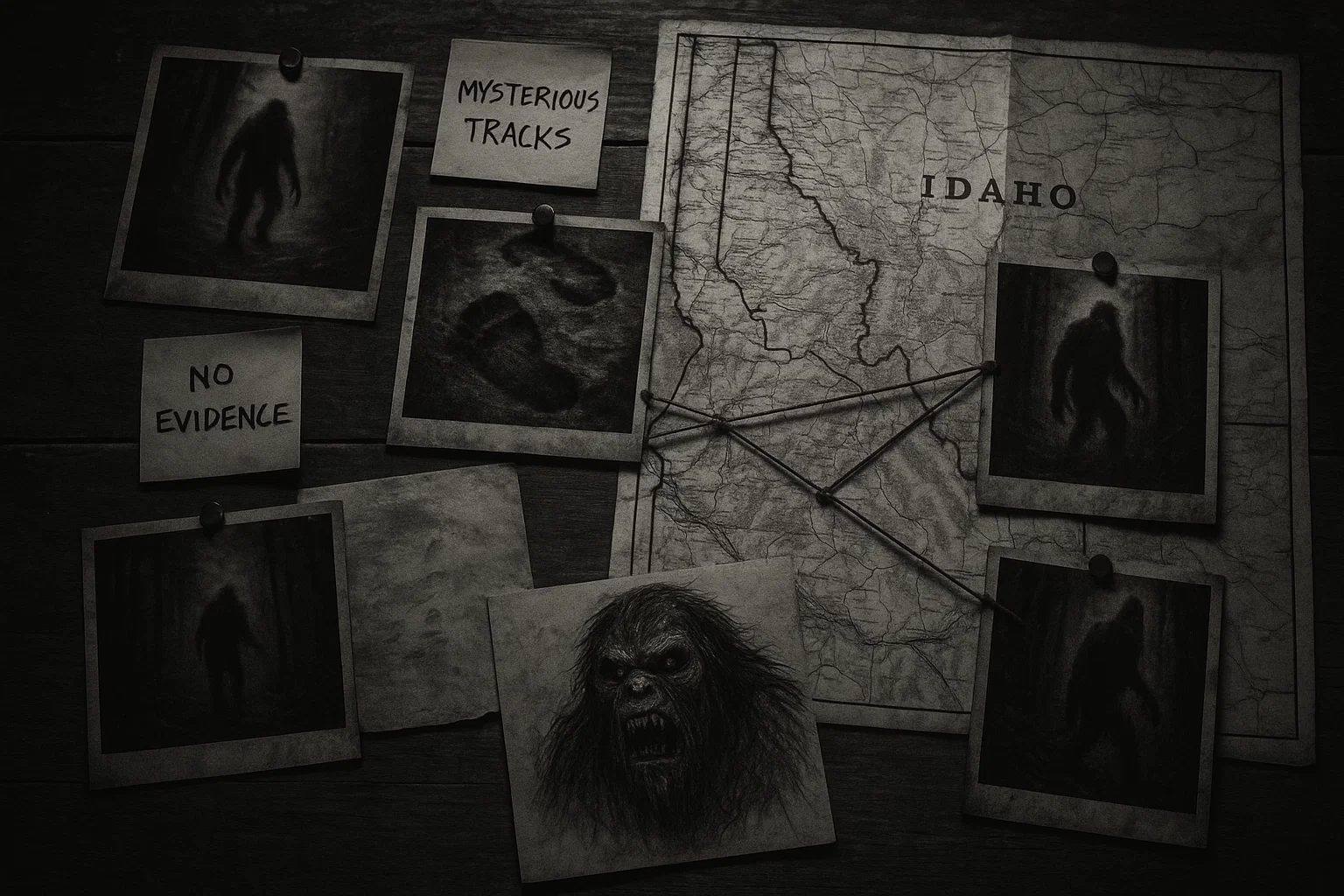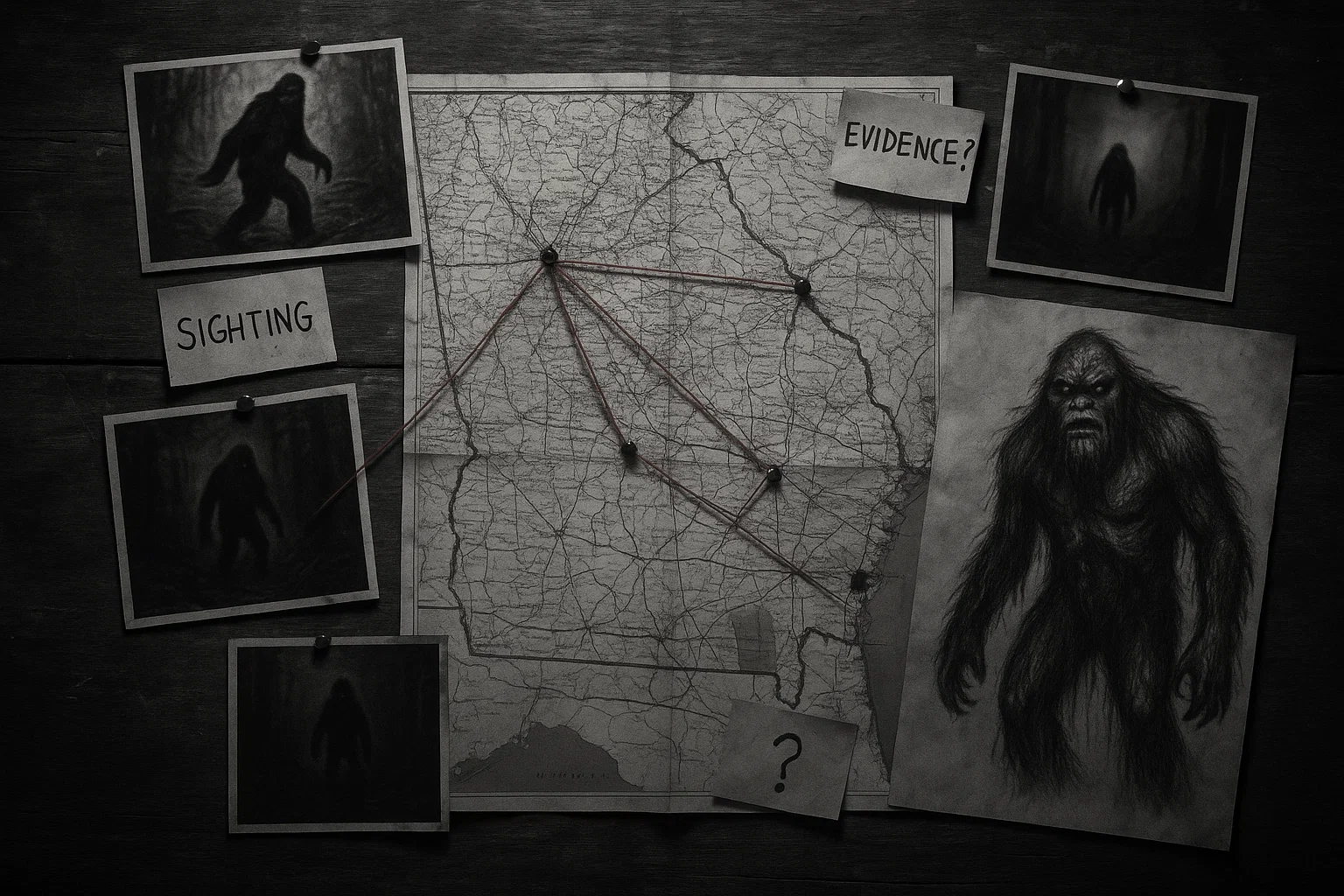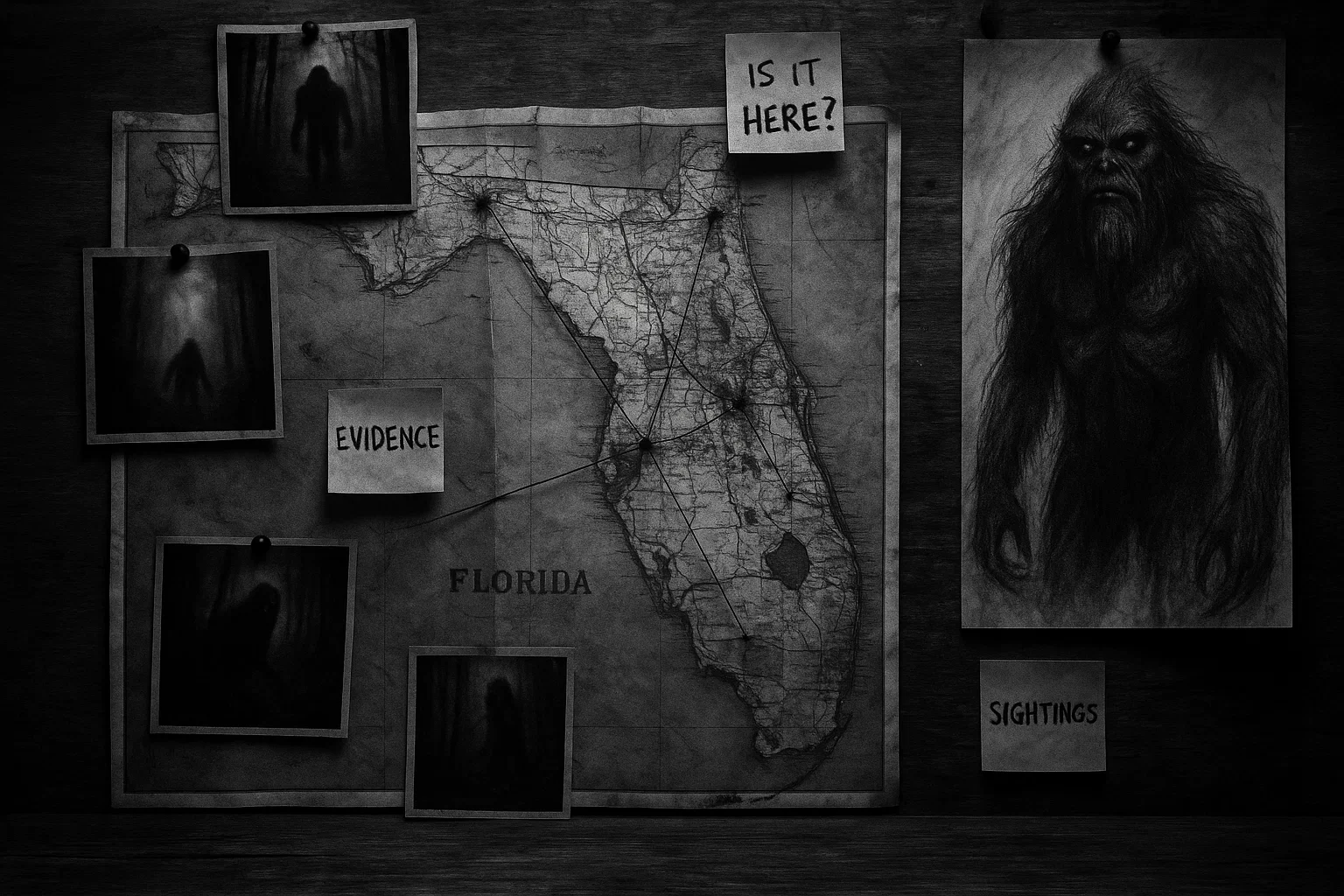The Upyr, a sinister creature from Slavic folklore, stalks the shadows of Eastern European legends. Emerging from the cultural tapestry of Russia, Ukraine, and Poland, this vampire-like being blends terror and fascination, feeding on blood and defying death itself.
Its unique ability to roam in daylight sets it apart, making it a formidable figure in myth and modern storytelling.
Table of Contents
Overview
| Trait | Details |
|---|---|
| Names | Upyr, Upiór, Upior, Opir, Upier; from Proto-Slavic ǫpyrь, meaning “biter” |
| Nature | Undead, vampire-like, malevolent spirit |
| Species | Humanoid, revenant |
| Appearance | Pale skin, reddened gums, wolf-like eyes, often red-haired or left-handed |
| Area | Russia (Kiev, Novgorod), Ukraine (Pokuttia), Poland (Kraków, Słupia), Belarus |
| Behavior | Feeds on blood, stalks villages, active noon to midnight |
| Creation | Heretics, suicides, unbaptized, or offspring of werewolf-witch unions |
| Weaknesses | Ash wood stake, decapitation, burning, garlic, blessed herbs |
| First Known | 1047, Word of Saint Grigoriy, Old East Slavic anti-pagan text |
| Myth Origin | Pre-Christian Slavic beliefs, tied to improper burial fears |
| Strengths | Daylight tolerance, superhuman strength, limited shape-shifting |
| Habitat | Graveyards, abandoned homes, crossroads in rural Slavic villages |
| Diet | Human blood, especially children’s, occasionally hearts |
| Protection | Garlic wreaths, salt lines, Orthodox crosses, proper burial rites |
| Time Active | Primarily nocturnal, but can roam during daylight in some regions |
What Is the Upyr?
The Upyr is a malevolent revenant in Slavic mythology, a corpse reanimated by an unclean spirit. It preys on the living, particularly targeting children and kin, with an insatiable thirst for blood.
Unlike Western vampires, the Upyr’s daylight mobility and ties to specific sins—heresy, suicide, or sorcery—mark it as a uniquely Slavic terror, embodying cultural anxieties about death and spiritual impurity.
Etymology
The term Upyr originates from the Proto-Slavic root ǫpyrь or ǫpirь, meaning “biter” or “one who thrusts,” a reference to the creature’s blood-drinking habit.
This etymology is supported by linguistic studies tracing the word to Old East Slavic, where it first appeared in the 1047 text Word of Saint Grigoriy, an anti-pagan treatise condemning worship of upyri alongside other deities.
Variations of the name proliferate across Slavic regions: Upiór in Polish, pronounced OO-pyoar, emphasizes a ghostly undead; Upior in Czech and Slovak, with a harsher OO-pee-or sound, suggests a malevolent spirit; and Opir or Upier in Old Russian, reflecting regional phonetic shifts.
A compelling theory links Upyr to the Turkic Ubır or Ubar, meaning “witch” or “vampire,” hinting at cultural exchanges along trade routes between Slavic and Turkic peoples in the early medieval period.
This connection is bolstered by the Bulgarian form впир (vpir), which directly influenced the modern English vampire through 18th-century European translations of Slavic folklore.
The Slovak verb vrepiť sa or vperiť sa (“to thrust into” or “to stick to”) offers another etymological thread, aligning with the Upyr’s biting attack, as noted by Czech linguist Václav Machek in his 1957 study of Slavic mythology.
In Polish folklore, the variant upierz (plural upierze) appears in 17th-century chronicles, such as the 1650 Kronika Polska, describing undead creatures haunting Mazovia.
Russian texts from the 12th century, like the Primary Chronicle, use onpyr to denote pagan sacrificial beings, suggesting a broader spiritual connotation before Christianization narrowed its meaning to a malevolent corpse.
In Ukrainian tales from Pokuttia, the term opur carries a softer pronunciation (OH-poor), tying it to local legends of restless spirits.
The Upyr’s name also intersects with related mythological figures. The Polish strzyga, a female undead, shares phonetic and thematic links, with both terms appearing in 15th-century sermons warning against pagan practices.
Similarly, the Serbian vourdalak, popularized in 19th-century literature, may derive from a shared Slavic-Turkic root, reflecting a regional web of undead myths. These linguistic connections highlight the Upyr’s role as a cultural bridge, influencing and borrowing from neighboring traditions.
By the 18th century, as Slavic folklore reached Western Europe, the term Upyr helped shape the vampire archetype, cementing its legacy in global mythology.
You May Also Like: The Village of Starving Souls | Horror Story
What Does the Upyr Look Like?
The Upyr’s appearance is both deceptive and grotesque, blending human and monstrous traits.
In Russian folklore, it often appears as a pale, gaunt figure with wolf-like eyes that glow faintly in the dark, reddened gums, and retracted lips revealing sharp teeth.
Ukrainian tales describe red-haired or left-handed individuals as potential Upyrs, marked by physical quirks like a unibrow, double teeth, or a grayish mark on the back.
Polish legends add details of a limp or a swollen, blood-engorged tongue, hinting at its recent feeding. In some accounts, it carries its head under its arm, a chilling image from Belarusian tales.
Its skin, cold and waxy, contrasts with flushed cheeks after feeding, and its hair may appear matted or unnaturally vibrant.
The Upyr can pass as human during the day, but at night, its true nature emerges—clad in tattered burial shrouds or peasant clothes, with claw-like nails and a stench of decay.
Regional variations include a skeletal frame in Polish tales or a bloated, ruddy complexion in Russian stories, reflecting local fears of the undead.
You May Also Like: Curse of the Colonel Sanders: Coincidence or Real Haunting?
Mythology
The Upyr emerges from the ancient tapestry of pre-Christian Slavic beliefs, where death was both a sacred transition and a source of existential dread.
Rooted in the spiritual landscape of 9th-century Eastern Europe, before the Christianization of Kievan Rus’ in 988 CE, the Upyr embodied fears of souls trapped in decaying flesh.
These fears were tied to the Slavic concept of the soul’s 40-day journey after death, a period when improper burial—without rites, blessings, or communal mourning—could lead to reanimation.
Those who died unbaptized, by suicide, or as sinners (heretics, sorcerers, witches, or murderers) were deemed especially vulnerable to becoming Upyrs, their restless spirits driven by envy to prey on the living.
The Upyr’s mythology gained traction during times of crisis, notably the Black Death (1348–1351), which ravaged Eastern Europe and left villages grappling with mass graves and unexplained deaths.
In regions like Novgorod and Kraków, bloated corpses with blood at the mouth were seen as evidence of Upyrs, fueling panic and exhumation rituals.
The 1732 vampire panic in Serbia, though tied to the related vourdalak, amplified Upyr legends, as reports of “living” corpses spread across Slavic lands. These events cemented the Upyr’s role as a cultural explanation for mortality’s mysteries, from sudden illnesses to livestock deaths.
Early written records, such as the 1047 Word of Saint Grigoriy, an Old East Slavic anti-pagan treatise, mention upyri as objects of forbidden worship, suggesting their pre-Christian significance.
By the 12th century, chronicles like the Primary Chronicle of Kievan Rus’ referenced undead beings, likely Upyrs, haunting villages near Kiev. These texts framed the Upyr as a punishment for defying divine order, a narrative reinforced as Christianity spread.
The Orthodox Church, particularly in Russia and Ukraine, portrayed Upyrs as manifestations of heresy, warning against pagan practices like leaving offerings at graves to appease restless spirits.
The Upyr’s connections to other Slavic creatures enriched its mythology. It shared traits with the strzyga, a female undead who drained life from victims, and the domovoi, a household spirit tied to ancestral worship.
Some legends suggest Upyrs could arise from unions between werewolves and witches, blending vampiric and lycanthropic traits—a motif prevalent in Belarusian tales from the 15th century.
In Polish folklore, the Upyr was linked to the mora, a spirit that suffocated sleepers, reflecting shared anxieties about nocturnal dangers. These connections highlight the Upyr’s place in a broader pantheon of Slavic supernatural beings, each embodying specific cultural fears.
Historical figures and events further shaped Upyr myths. In 1370, a Moscow cleric named Father Dmitry recorded a case of a suspected Upyr, a merchant who died during a famine and was seen wandering at night.
His exhumation revealed a “ruddy” corpse, leading to its staking and burning. Such incidents, often documented in church records, reinforced the Upyr’s association with societal upheaval, like the 1550s famines in Russia or the Thirty Years’ War (1618–1648), which devastated Polish-Lithuanian communities.
These periods of chaos saw a surge in Upyr sightings, as communities sought scapegoats for their suffering.
The Upyr’s evolution continued into the early modern period, influenced by contact with Western Europe. By the 17th century, Polish and Ukrainian scholars like Jan Łasicki documented Upyr-like creatures in treatises on Slavic paganism, noting their role in rural rituals.
The 18th-century Enlightenment brought skepticism, but Upyr legends persisted in oral traditions, particularly in remote areas like Volhynia and Pokuttia. The creature’s mythology also inspired literary works, such as Nikolai Gogol’s 1835 novella Viy, which features an undead witch with Upyr-like traits—pale skin, bloodlust, and supernatural strength.
The Upyr’s adaptability is evident in its regional variations. In Russia, Upyrs were often depicted as solitary predators, stalking graveyards and forests.
In Ukraine, they were communal threats, targeting entire villages, as seen in 1798 Pokuttia legends of Upyrs luring victims with hypnotic voices. Polish tales emphasized the Upyr’s deceptive human form, blending into markets or churches before attacking.
These differences reflect local customs: Russian Orthodox burial rites focused on ash stakes, while Polish Catholic traditions used blessed herbs like rue.
Despite these variations, the Upyr consistently symbolized the consequences of spiritual neglect, reinforcing the importance of proper death rituals across Slavic cultures.
By the 19th century, the Upyr’s mythology began influencing global vampire lore. The 1820s Romantic movement, with its fascination for the supernatural, drew on Slavic tales, as seen in Alexander Pushkin’s 1834 poem The Upyr, which portrays a blood-drinking revenant.
This period also saw the Upyr’s traits—daylight tolerance, human disguise—merge with Western vampire archetypes, contributing to Bram Stoker’s 1897 Dracula. While Stoker’s vampire was Romanian-inspired, its ability to blend into society echoed the Upyr’s deceptive nature.
Today, the Upyr remains a potent symbol of Slavic heritage, its mythology a testament to the enduring power of fear, faith, and storytelling in shaping cultural identity.
You May Also Like: Jinmenken: Japan’s Terrifying Human-Faced Dog
Legends
The Upyr’s legends are vivid, localized tales that reveal its chilling grip on Slavic communities. Each story, steeped in oral traditions, reflects cultural fears of death, improper burial, and spiritual impurity:
The Słupia Suicide (Poland, 1823)
In the Polish village of Słupia, near Łódź, a young weaver named Janek Kowalski took his life in March 1823 after a failed romance. By April, villagers reported livestock drained of blood and children vanishing at dusk.
Oral traditions, passed down by Słupia’s elders, claimed Janek’s pale figure, with glowing wolf-like eyes, haunted the cemetery. Father Władysław Nowak, the local priest, led a midnight exhumation on April 15, 1823.
Janek’s corpse, unnaturally preserved with bloodied lips, was staked through the heart with an ash wood stake and burned on a pyre of hawthorn branches.
The attacks ceased, reinforcing the community’s belief in proper burial rites to prevent Upyr risings. Villagers still recount this tale during All Souls’ Day, warning against suicide’s spiritual consequences.
The Kraków Corpse (Poland, 1847)
In Kraków’s Podgórze district, a merchant named Tadeusz Wójcik died suddenly on February 3, 1847, from a fever.
By late February, his widow reported ghostly knocks and sightings of a gaunt figure near their home. Oral traditions, preserved by Kraków’s market vendors, described Tadeusz’s corpse as an Upyr, marked by a swollen tongue and blood at the mouth.
On March 10, 1847, the parish priest, Father Ignacy Kowal, oversaw an exhumation. The body, found face-up and “flushed with life,” was staked through the skull with an iron rod, sprinkled with blessed thyme, and reburied face-down to prevent rising.
The ritual, rooted in Polish Catholic practices, calmed the community, who believed Tadeusz’s sudden death without last rites triggered his transformation. This tale remains a cautionary story in Podgórze’s folklore.
The Pokuttia Crossroads (Ukraine, 1798)
In Ukraine’s Pokuttia region, near Kolomyia, a seamstress named Olena Hrytsenko died in childbirth on July 22, 1798, along with her unbaptized infant.
By August, villagers reported a siren-like voice luring men to the forest, where they were found drained of blood. Local oral traditions, shared by Pokuttia’s storytellers, identified Olena as an Upyr, her unrest tied to her unbaptized state.
On August 30, 1798, her body was exhumed and buried at a crossroads, a common Slavic practice to trap restless spirits. Her grave was sealed with salt lines and Orthodox prayers led by Father Mykhailo. The community believed the crossroads confused the Upyr, preventing her return.
This legend, still told during Ukrainian harvest festivals, underscores the importance of baptism and proper burial.
The Chigirinsky Protector (Ukraine, 1765)
In Chigirinsky Uyezd, near Cherkasy, a rare benevolent Upyr tale emerged in 1765. A Cossack named Petro Shevchenko, aged 25, was protected by his father, Mykola, who died in battle on June 12, 1765.
By July, Petro reported a shadowy figure fending off bandits near his home. Village elders, through oral accounts, claimed Mykola returned as an Upyr, driven by paternal duty rather than malice.
On July 20, 1765, Mykola’s body was exhumed, revealing a “living” appearance. It was buried with poppy seeds and holy water to ensure his rest. This unusual story, shared during Cossack gatherings, reflects beliefs that Upyrs could occasionally act with purpose, protecting kin before moving on.
The Novgorod Night Stalker (Russia, 1690)
In Novgorod’s rural outskirts, a sorcerer named Ivan Volkov died under suspicion of witchcraft on October 5, 1690. By November, villagers reported a bloated figure attacking families at night, leaving bloodless corpses.
Oral traditions, preserved by Novgorod’s skomorokhs (wandering bards), described Ivan as an Upyr, his sorcery binding him to the living world. On November 18, 1690, his grave was opened, revealing a corpse with reddened gums and fresh blood.
The body was burned with hawthorn branches in a ritual led by a local monk, Brother Sergei. The community believed Ivan’s unrepentant sorcery fueled his transformation, and the burning purified the village.
This legend, told during Russian winter gatherings, warns of the dangers of forbidden knowledge.
The Belarusian Headless Upyr (Belarus, 1802)
Near Minsk, in the Belarusian village of Zaslawye, a farmer’s wife named Hanna Petrova died of illness on January 9, 1802. By February, villagers saw a headless figure wandering the fields, carrying its head under its arm.
On February 20, 1802, her grave was exhumed, revealing a corpse with glowing eyes. The body was decapitated, the head placed at its feet, and sprinkled with holy water by Father Aliaksandr.
This ritual, tied to Belarusian beliefs in headless revenants, stopped the sightings. The story, recounted during village feasts, emphasizes the need for proper last rites to prevent such horrors.
The Lviv Widow’s Curse (Ukraine, 1810)
In Lviv, a lesser-known tale from 1810 centers on a widow named Maria Kovalenko, who died cursing her neighbors after a land dispute. By September 1810, locals reported a pale figure with matted hair draining livestock and children.
On September 15, 1810, her body was exhumed, revealing a blood-engorged tongue. It was staked with ash wood and buried face-down with blessed rue.
The ritual, led by Father Stepan, ended the attacks, reinforcing beliefs in the power of curses to create Upyrs.
The Volhynian Grave Watcher (Ukraine, 1775)
In Volhynia, near Lutsk, a 1775 legend tells of a blacksmith named Dmytro Bohdan, who died violently in a tavern brawl on March 3. By April, villagers reported a gaunt figure guarding the cemetery, attacking trespassers.
On April 10, 1775, his body was exhumed, tied with blessed hemp ropes, and buried with poppy seeds to distract him. Father Vasyl led the ritual, sealing the grave with salt. This tale, told during Volhynian harvest celebrations, highlights the community’s fear of violent deaths spawning Upyrs.
You May Also Like: What Is a Vourdalak? The Horrifying Vampire That Hunts Its Own Family
The Upyr vs Other Monsters
The Upyr shares traits with other undead creatures but stands out for its daylight activity and specific creation methods:
| Creature | Origin | Creation Method | Weaknesses | Unique Traits |
|---|---|---|---|---|
| Upyr | Slavic | Heresy, suicide, unbaptized | Ash stake, decapitation, burning | Daylight tolerance, human disguise |
| Vampire (Western) | European | Vampire bite | Sunlight, garlic, cross | Nocturnal, aristocratic allure |
| Jiangshi | Chinese | Improper burial | Taoist talismans, rice | Hops, rigid body |
| Strigoi | Romanian | Curse, witchcraft | Silver, fire | Living or dead, shape-shifts |
| Draugr | Norse | Unavenged death | Fire, wrestling | Guards treasure, immense strength |
| Nosferatu | German/Romanian | Curse, plague | Sunlight, holy relics | Rat-like, plague carrier |
| Ekimmu | Mesopotamian | Violent death | Exorcism | Ghostly, haunts families |
| Aswang | Filipino | Born, cursed | Salt, whip | Shape-shifts into animals |
| Chupacabra | Latin American | Unknown | Unknown | Reptilian, livestock predator |
| Nachzehrer | German | Plague, suicide | Decapitation, coins | Eats own shroud, spreads disease |
| Moroi | Romanian | Born to strigoi | Fire, holy ground | Weaker, less malevolent than strigoi |
| Lamia | Greek | Curse by gods | Iron, herbs | Serpent-like, seductress |
| Vetala | Indian | Possessed corpse | Exorcism, mantras | Possesses bodies, prophetic |
Can You Defeat a Upyr?
Defeating an Upyr requires precise rituals rooted in Slavic traditions, reflecting the cultural importance of proper burial.
Common methods include:
- Staking: Driving an ash or hawthorn stake through the heart, often during exhumation, to pin the Upyr to its grave.
- Decapitation: Severing the head with a blessed blade, sometimes filling the mouth with garlic or poppy seeds.
- Burning: Cremating the corpse with hawthorn branches or sacred fire to ensure complete destruction.
- Religious Artifacts: Using Orthodox crosses, holy water, or silver icons to repel the creature.
- Protective Barriers: Sprinkling salt lines or blessed thyme around homes, or hanging garlic wreaths on doors.
- Burial Rites: Burying suspected Upyrs face-down, at crossroads, or with poppy seeds to distract them, preventing reanimation.
Regional variations exist: in Poland, blessed herbs like thyme or rue were used, while in Ukraine, poppy seeds were scattered to keep Upyrs counting until dawn.
Russian tales emphasize hawthorn stakes, believed to have purifying properties. Compared to Western vampires, the Upyr’s daylight tolerance makes it harder to repel, requiring proactive exhumation rather than sunlight exposure.
Unlike the jiangshi, which is stopped by rice or talismans, the Upyr demands physical destruction, highlighting its resilience and the intensity of Slavic countermeasures.
In Popular Culture
The Upyr’s haunting presence has permeated modern media, blending ancient folklore with contemporary horror.
In the 2013–2015 Netflix series Hemlock Grove, the Upyr is portrayed as a distinct vampire species, born from cursed lineage, with characters like Roman Godfrey embodying its bloodlust and human disguise.
Elizabeth Kostova’s 2005 novel The Historian draws on Slavic vampire myths, including Upyr-like traits, in its exploration of Dracula’s origins. The 2014 mockumentary What We Do in the Shadows subtly references Eastern European undead, with characters echoing the Upyr’s deceptive normalcy.
In gaming, the 2008 video game The Witcher 3: Wild Hunt features ekimmu and strzyga, creatures with Upyr-like characteristics, stalking rural villages.
Russian author Nikolai Gogol’s 1835 novella Viy includes an undead witch with Upyr traits, inspiring the 1967 Soviet film adaptation. The 2018 novel The Vampire: A New History by Nick Groom explores the Upyr’s influence on global vampire lore, tracing its Slavic roots.
These adaptations highlight the Upyr’s versatility, reimagining its daylight prowling and bloodthirsty nature for modern audiences, while preserving its cultural significance.
Conclusion
The Upyr remains a captivating figure in Slavic folklore, its chilling presence woven into the fabric of Eastern European culture. From its origins in pre-Christian burial fears to its evolution through plagues and religious shifts, the Upyr reflects humanity’s enduring fascination with the undead.
Its vivid legends, from Słupia’s staked suicides to Pokuttia’s crossroads burials, reveal the depth of community beliefs and the power of oral storytelling.
In modern media, the Upyr’s legacy endures, inspiring creators to explore its unique blend of terror and deception. By delving into its etymology, appearance, and rituals, we uncover not only a monster but a mirror to Slavic anxieties about life, death, and the afterlife.
The Upyr’s story, spanning centuries and continents, underscores the timeless allure of myth, inviting us to confront the shadows that linger beyond the grave.

